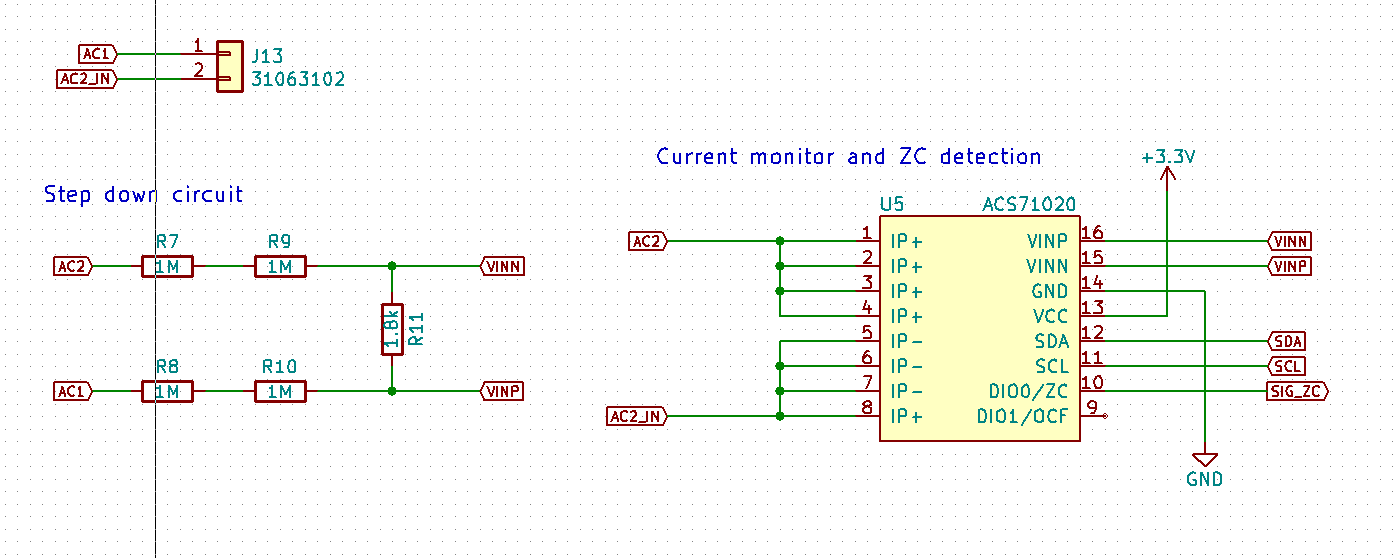I think the ACS37800 might be the other solution (at least it looks like it will be fore me). I was getting the same results on the 71020 as others in this thread: stable communication (able to read and write), weird ZC with no input, but I noticed different results depending on if my power source was floating or not compared to the inputs. Going to the website I notice under the datasheet link:
"Not recommended for new developments. Refer to the ACS37800 which is pin to pin compatible." (probably should have read that before I started designing)
Looking at the 37800 datasheet the Vnn is fixed to device GND and ZC flag is by default on the voltage channel. My guess is that the 71020 was floating, but the 37800 now has Vnn to GND fixed which hopefully will have the ZC work as expected. It also looks like the 37800 works with both DC and AC while the 71020 (from what I read here) doesn't.
Side note: The 37800 datasheet also has a lot more information on how this device functions, what some of the features look like and some considerations when designing the device into your application.
I'm going to give this device a try, figured I'd shout out a possible solution here.


